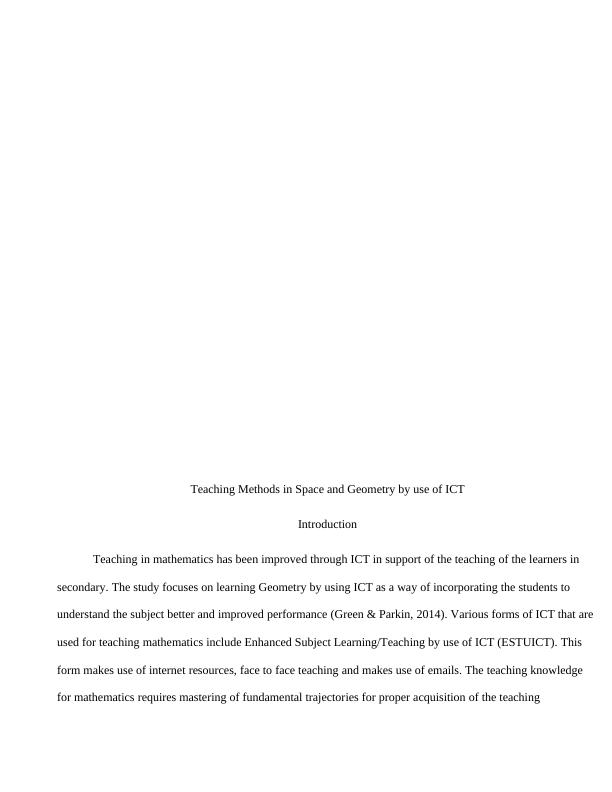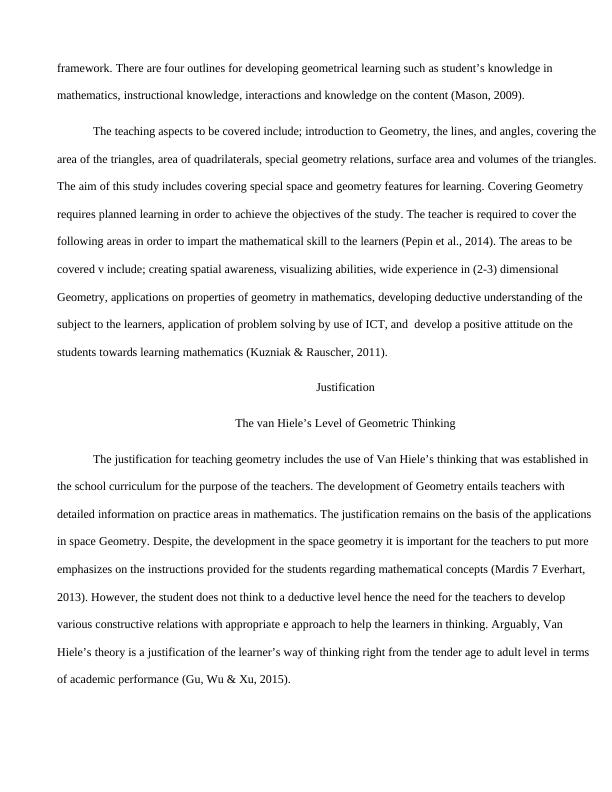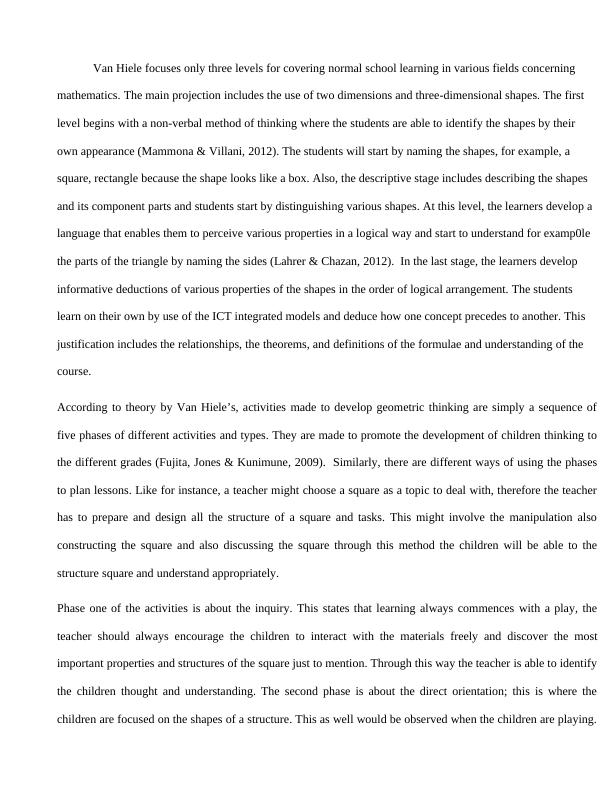Teaching Methods in Space and Geometry by use of ICT
Assignment 2: Equivalent to 2000 words (weighting of 50%). Part A: Describe three Early Number Activities targeting multiplication, place value, and group number game. Part B: Design a sequence of activities using ICT as a teaching tool in the Space & Geometry strand, incorporating assessment for learning techniques.
17 Pages2340 Words122 Views
Added on 2022-11-11
About This Document
The study focuses on learning Geometry by using ICT as a way of incorporating the students to understand the subject better and improved performance. The teaching aspects to be covered include; introduction to Geometry, the lines, and angles, covering the area of the triangles, area of quadrilaterals, special geometry relations, surface area and volumes of the triangles.
Teaching Methods in Space and Geometry by use of ICT
Assignment 2: Equivalent to 2000 words (weighting of 50%). Part A: Describe three Early Number Activities targeting multiplication, place value, and group number game. Part B: Design a sequence of activities using ICT as a teaching tool in the Space & Geometry strand, incorporating assessment for learning techniques.
Added on 2022-11-11
ShareRelated Documents
End of preview
Want to access all the pages? Upload your documents or become a member.
Measurement and Geometry - General Mathematics Course
|18
|3781
|87
Early Childhood Education: Teaching Activities for Geometry Shapes Identification
|4
|813
|266
Maths Reflection Writing Article 2022
|3
|422
|41
The Illusion of Linearity - Sample Assignment
|5
|1272
|27
Teaching in a Specialist Area
|15
|3177
|41
Lesson Plan: Volume - Stage 4
|20
|5048
|386




